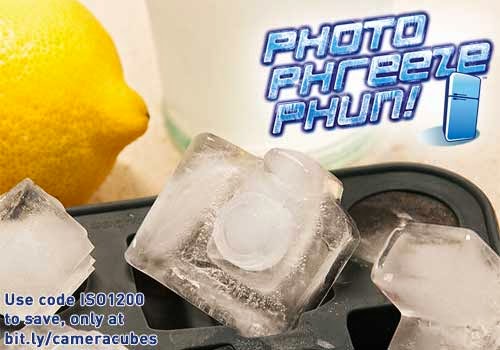What is a snoot?” Snoot Basics by The Slanted Lens
**Go to http://theslantedlens.com/giveaway/ to enter for a chance to win a Rosco V-Hazer Fog Machine! Enter daily 'til 01/31.**
Today on The Slanted Lens, they are going to answer the age old question, “What is a snoot?”:
We are still at the YouTube Space and going strong but before we get to our film noir setup, let’s take a look at what a snoot is. A snoot is a funny name for a piece of equipment that fits over a studio light or portable flash and allows the photographer to control the direction or area of coverage of the light. In film, we use black wrap to create snoots – basically black aluminum foil that can be formed into a funnel and molded to the light.
So what is the area of coverage of a snoot? This is a hard question to answer since there are many different sizes from different manufacturers and you can make your own. The one I have is fairly average so let’s look at how it compares to a grid. I shot an image of our subject against a white wall with the light eight feet away and a second on set. The area of coverage is very narrow and the fall out is very sharp. There is a certain amount of fill in the dark areas when we shot on the white wall but I don’t think the snoot was sealed well enough to the instrument. Images using a snoot usually have a very concentrated area of light with no fill in the shadows. Compare this to a shot with the same setup using a 10 degree grid. The edges are softer with the grid, the light falls off much faster and there is a hot spot in the middle.
The quality of light with a snoot is a little bit harder than a grid. It is a very directional light with little or no fill from light bouncing off the sides of the reflector. Because the snoot is so far out in front of the reflector, it has negated any side bounce.
We got some great images with snoots and a hazer. This type of look is very compelling to me. Take a look at a few of the edited color images after the faces and floor were retouched. Snoots are a hard light that create a lot of contrast, which is great for black and white images. It wouldn't be film noir if the images didn't look good in B&W, so take a look at the final images after I took them into Silver Efex.
These past two lessons on grids and snoots have been a great exercise for me and has helped me understand the difference between these two pieces of equipment. Grids are harder and more diffused on the edges while a snoot is more directional and keeps a constant exposure throughout the light pattern. Snoots do have the advantage of being any size you want them to be when using black wrap to create them. Grids only have four sizes. They both have a place on set, though, and I hope you learned as much as I did.
Keep those cameras rollin' and keep on clickin'.
Text and video via The Slanted Lens



















0 comments:
Post a Comment